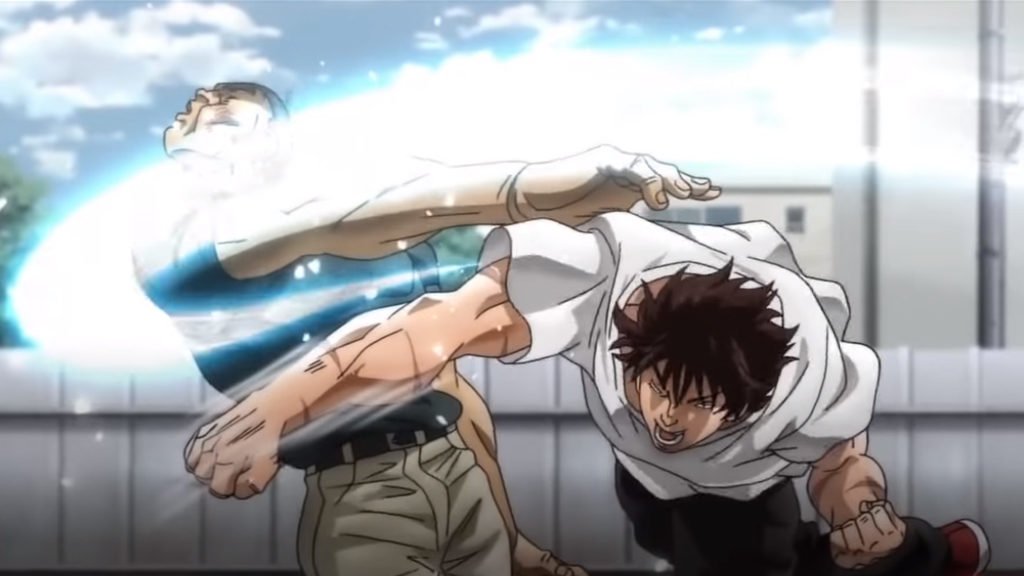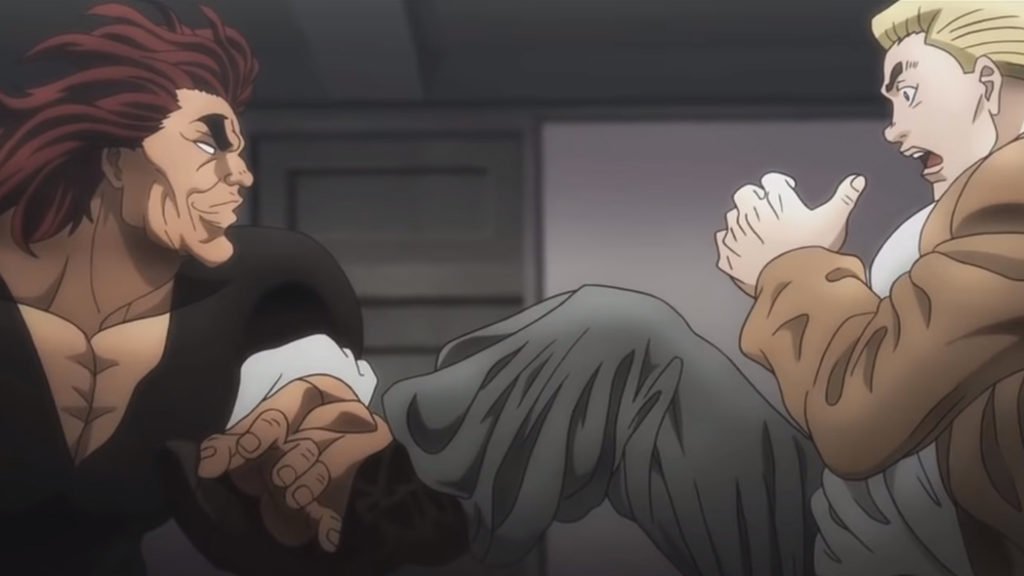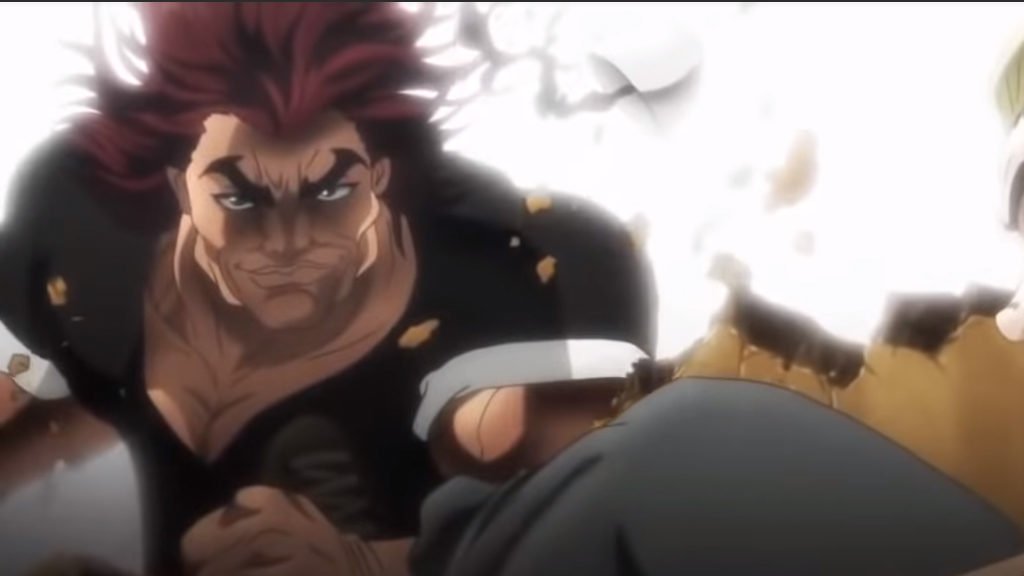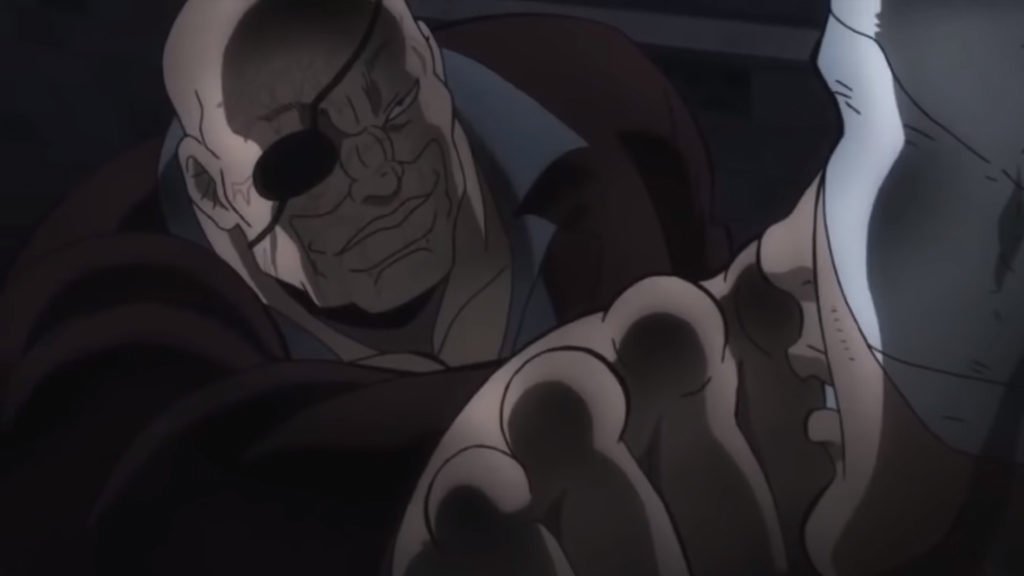BAKI Part 2 Review
BAKI Part 2 has finally arrived on Netflix. What was essentially the third series of Keisuke Itagaki’s Baki The Grappler anime adaption, has now been released in its entirety (have a look at my review of Part 1 if you wish to decipher the confusing release timeline of this anime). So now we can look forward to the continuation of the eccentric, musclebound adventures of Baki Hanma, and the conclusion of “Most Evil Death Row Convicts” arc.

The story continues immediately from where Part 1 left off and follows the same tone of muscle-popping ridiculousness. There is the loosest of plots in place and it is easily summarised as Baki and his supporting cast of martial artists taking on the remaining convicts that threaten them. There is very little else that needs to be known beyond this as it simply exists as a framework to facilitate BAKI’s over-the-top brand of hyper-violent fights. To the series’ credit, it is very self-aware of what it is, and continues to relish its preposterous twists fuelled by super-powered martial arts techniques. It’s clear that to enjoy BAKI, you have to appreciate it for what it is: an adaption of a series from a different time. It has the structure and feel of an older anime, like a Fist of the North Star or a Ninja Scroll, where martial-arts, technique and violent spectacle are the true goal rather than nuanced character and plot development. It’s definitely not for everyone but if you’re looking for some ludicrous action anime junk food to consume, then this might be what you’re hungry for.

For many this will be their first encounter with the world of Baki The Grappler and, as I mentioned in my Part 1 review, the narrator does a great job in providing introductions for characters that were a part of Baki’s previous adventures. If you thought all of those introductions were done at this point, then you are very wrong. The cast of BAKI continues to expand, including fan favourites such as Biscuit OIiver growing in prominence, and even one very significant real-life figure showing up later in the story. For fans of the manga or previous anime iterations, these old characters are great inclusions that could mean a lot to the hardcore fans, but for those unacquainted, these could just be a series of super athletic deus ex machinas to resolve another musclebound plot point.

Many of the characters are really just extensions of their fighting styles, given personalities to complement their particular set of abilities. That being said, the line between the convicts and the regular martial artists are certainly blurred in this part. It does provide some interesting development for the fighters as they have to address their respective codes of honour in the face of enemies who will break every rule to win. How these conflicts develop often show Baki’s allies to be just as terrifying as the world’s deadliest convicts. I’d also like to mention a surprising development involving Baki’s girlfriend, Kozue Matsumoto. Until this point she has more or less been used by the antagonists as a plot device to manipulate Baki, but in a moment that really stands out in the series, she directly addresses this kind of treatment of female characters in these sorts of stories. Although I have my doubts that this will stick or develop much further, I was glad that the series’ self-awareness has expanded past its bizarre plot.

As I mentioned in my Part 1 review, I am a long-time fan of combat sports and martial arts and the animation was somewhat of a let-down in conveying the admittedly ridiculous techniques the show’s various martial artists use. There were some awkward CG animation sequences used previously that luckily are much less prevalent in this later part. The lack of fluidity in the combat sequences is still present with them being mostly just still frames rather than fluid animation; however, the impact of these fights really packs a punch. The hulking, muscular cast have all been effectively translated from the manga in all their grotesque glory by the studios, TMS Entertainment (also responsible for the BAKI OVA released in 2016) and Double Eagle. Though they don’t move smoothly, when a hit connects they don’t shy away from the intense impact. Maybe it’s because the fights in this part are much more direct, but the blood-curdling, earth-shaking connection of these fighters’ meaty punches and kicks among many other strikes, both realistic and insanely unrealistic, are incredibly well conveyed. They may not have the fluid animation of Studio Bones but they have doubled down on really emphasising the conclusion of these powerful martial arts techniques and their stomach-churning effects, which is exactly what they should be doing when violence and shock is the goal.

The new opening “The Gong of Knockout” by Fear, and Loathing in Las Vegas, is as chaotic as the series itself. A hyperactive blend of speed metal, rap and 90s style electronica, I would have never imagined an opening like this for any show but because it is so intense, it seems like a perfect opening. Despite my complaints about the awkward CG animation used in the show itself, the CG shadow boxing Baki used during the opening is excellent and smoothly animated. The closing is “BEAUTIFUL BEAST” by DEVIL NO ID, a song led by female vocals until it drops into thumping electronica. With all the character models rolling past, it’s a rather bizarre closing to an already weird series.

A couple of weeks ago Netflix confirmed that it had renewed BAKI for another season and even though there are decades of material to adapt, it is clear from where the series ends that this was the intention. I don’t mean it simply has potential plot threads that could carry into a new season or that it gave minor hints to the next story, but the last two episodes are the beginnings of a whole new arc. Baki’s next challenge is firmly in place by the series’ conclusion and those that have enjoyed it to this point should be very excited by what is to come.

With the release of Part 2, Netflix now has the entirety of BAKI’s “Most Evil Death Row Convicts” arc available to witness in all of its gory, hyper-violent glory. It is not a particularly meaningful or nuanced story, but it is an action spectacle in the same vein as anime decades ago, which separates it from anything else in Netflix’s current anime catalogue. BAKI certainly won’t be everyone’s cup of tea but those who want a visceral, adult (and I emphasise there are some very adult scenes), often ridiculous action series, then this could scratch that itch.


